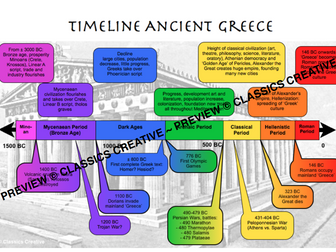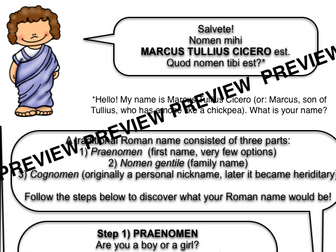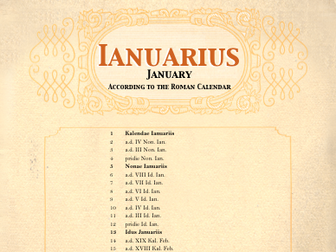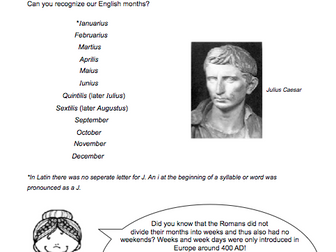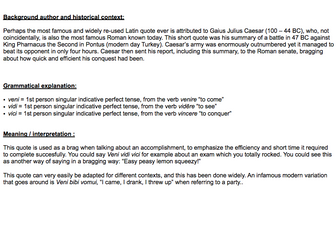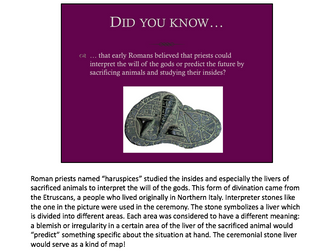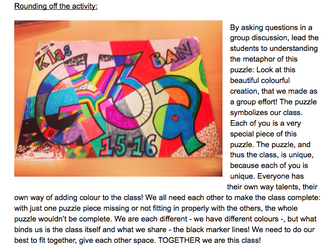Timeline Ancient Greece Poster
This timeline shows the history of the Ancient Greek Civilisation, divided into the most common periods. Above the timeline you will find a short description of the highlights of each period in the same colour as that period on the timeline. Below the timeline, important events are added in the colours of each period. The specific events that marked the transitions between the different periods are added with thicker borders and fading colours.<br />
<br />
I refer to this poster almost every lesson when I'm teaching Greek or ancient history! It is very useful to allow the students to keep an overview in their mind when we're talking about a specific historical event or person. My students have gotten so used to my poster that they for example say that Plato of course lived in the "yellow"; period, that Homer's texts are from the "blue" period and that the story of Theseus and the Minotaur is situated in the "pink" period. <br />
<br />
The file is large and detailed enough to print on an A1 format as a poster. I have a Dutch version available too.
